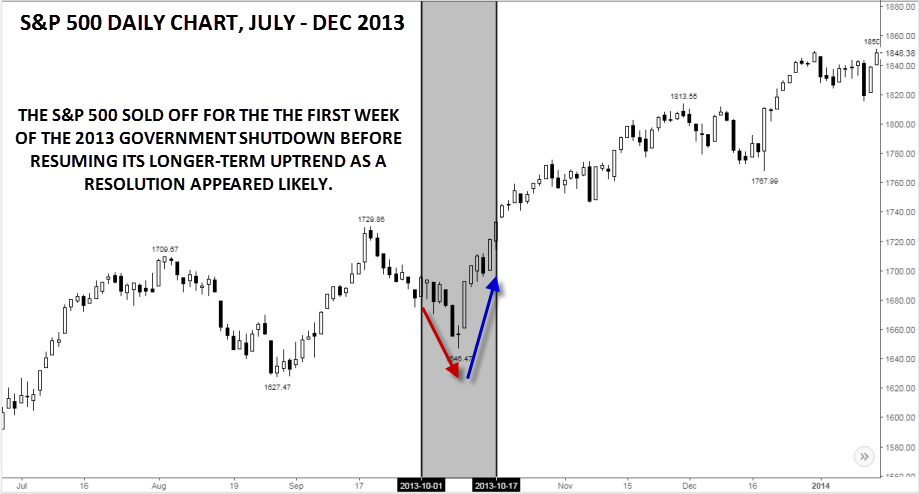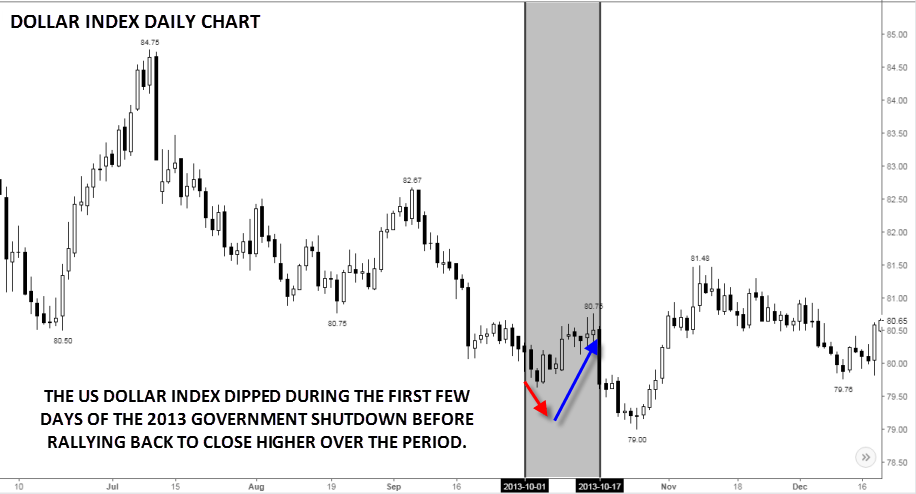A "government shutdown."
It certainly sounds like a foreboding event in a modern developed nation, much less the largest economy on the planet. Surely such an event would be extremely rare?
Looking back at the historical record, that's not actually the case.
Since the current congressional budgeting process was enacted in 1976, there have been eighteen separate government shutdowns (or "spending gaps" as they're called on Capitol Hill). The first six of these actually didn't impact government functioning in any way, but since 1980 all shutdowns have mandated at least a partial shutdown of government agencies.
It's worth noting that not all such shutdowns have been a result of politically contentious debate over which programs to fund; in fact, one shutdown in 1982 took place because congressional leaders were too busy partying at a barbeque and forgot to pass a funding bill on time.
Nowadays though, every issue is hyper-partisan, and the current debate over children's health insurance and immigration is clearly more contentious than a fundraising dinner. As of writing, the US House of Representatives has passed a one-month temporary spending measure to kick the proverbial can down the road, but the bill's prospects in the Senate are looking increasingly bleak. If no agreement is reached by the end of the day, certain government services will shut down at midnight.
So what does this mean for markets?
Based on the continuing uptrend in the stock market, investors are relatively unperturbed. Even the US dollar has stabilized above the key 90.00 level this week, despite increasingly dire headlines out of Washington. While we always prefer to take a "glass half full" outlook, it's worth exploring what could happen to stocks and the dollar if the government is indeed forced to shut down tonight.
For inspiration, we're looking to the most recent spending gap, in October 2013 (before that, the most recent government shutdown took place in 1995). Back in 2013, Republicans refused to vote for a bill that that increased discretionary spending and demanded a one-year delay on rolling out the Affordable Care Act. That shutdown lasted 17 days and involved 850,000 federal workers (40% of the total federal workforce) getting furloughed, only ending when House Speaker John Boehner backed down. The 17-day shutdown was the second-longest since 1980 (behind 1995-1996), providing an example of a bad (we hesitate to say "worst) case scenario.
As they are now, US stocks were in a prolonged uptrend heading into the shutdown. As the prospects of a timely agreement faded, the S&P 500 sold off in the week prior to the shutdown. The selling carried over into the first week of the shutdown as traders braced themselves for a prolonged stalemate, but once an agreement appeared likely, the stock market rallied back strongly, actually finishing the shutdown period higher than where it started.

The US dollar saw a slightly different performance profile over the period. The dollar, which had been in a short-term downtrend ahead of the 2013 shutdown, briefly dipped for the first couple of days before rallying back strongly in the latter half of the government shutdown. Once a deal was announced, the dollar index sold off sharply, perhaps as a result of a fading "flight to quality" bid. Overall the greenback finished the entire two week period modestly lower, in-line with the dominant downtrend at the time.

On the whole, the 2013 government shutdown did not did little to interrupt the established trends in either the S&P 500 or the US dollar. After an initial period of weakness, both assets rallied as a budget agreement grew more likely, though it's worth noting that the buck sold off once an agreement was reached.
Of course, it's impossible to say whether markets would follow the same path if we see a US government shutdown this time around, but this analysis supports prioritizing a trend- and price-based outlook toward markets, regardless of the "news" grabbing all the headlines.
This research is for informational purposes and should not be construed as personal advice. Trading any financial market involves risk. Trading on leverage involves risk of losses greater than deposits.
Recommended Content
Editors’ Picks

AUD/USD: The hunt for the 0.7000 hurdle
AUD/USD quickly left behind Wednesday’s strong pullback and rose markedly past the 0.6900 barrier on Thursday, boosted by news of fresh stimulus in China as well as renewed weakness in the US Dollar.

EUR/USD refocuses its attention to 1.1200 and above
Rising appetite for the risk-associated assets, the offered stance in the Greenback and Chinese stimulus all contributed to the resurgence of the upside momentum in EUR/USD, which managed to retest the 1.1190 zone on Thursday.

Gold holding at higher ground at around $2,670
Gold breaks to new high of $2,673 on Thursday. Falling interest rates globally, intensifying geopolitical conflicts and heightened Fed easing bets are the main factors.

Bitcoin displays bullish signals amid supportive macroeconomic developments and growing institutional demand
Bitcoin (BTC) trades slightly up, around $64,000 on Thursday, following a rejection from the upper consolidation level of $64,700 the previous day. BTC’s price has been consolidating between $62,000 and $64,700 for the past week.

RBA widely expected to keep key interest rate unchanged amid persisting price pressures
The Reserve Bank of Australia is likely to continue bucking the trend adopted by major central banks of the dovish policy pivot, opting to maintain the policy for the seventh consecutive meeting on Tuesday.

Five best Forex brokers in 2024
VERIFIED Choosing the best Forex broker in 2024 requires careful consideration of certain essential factors. With the wide array of options available, it is crucial to find a broker that aligns with your trading style, experience level, and financial goals.